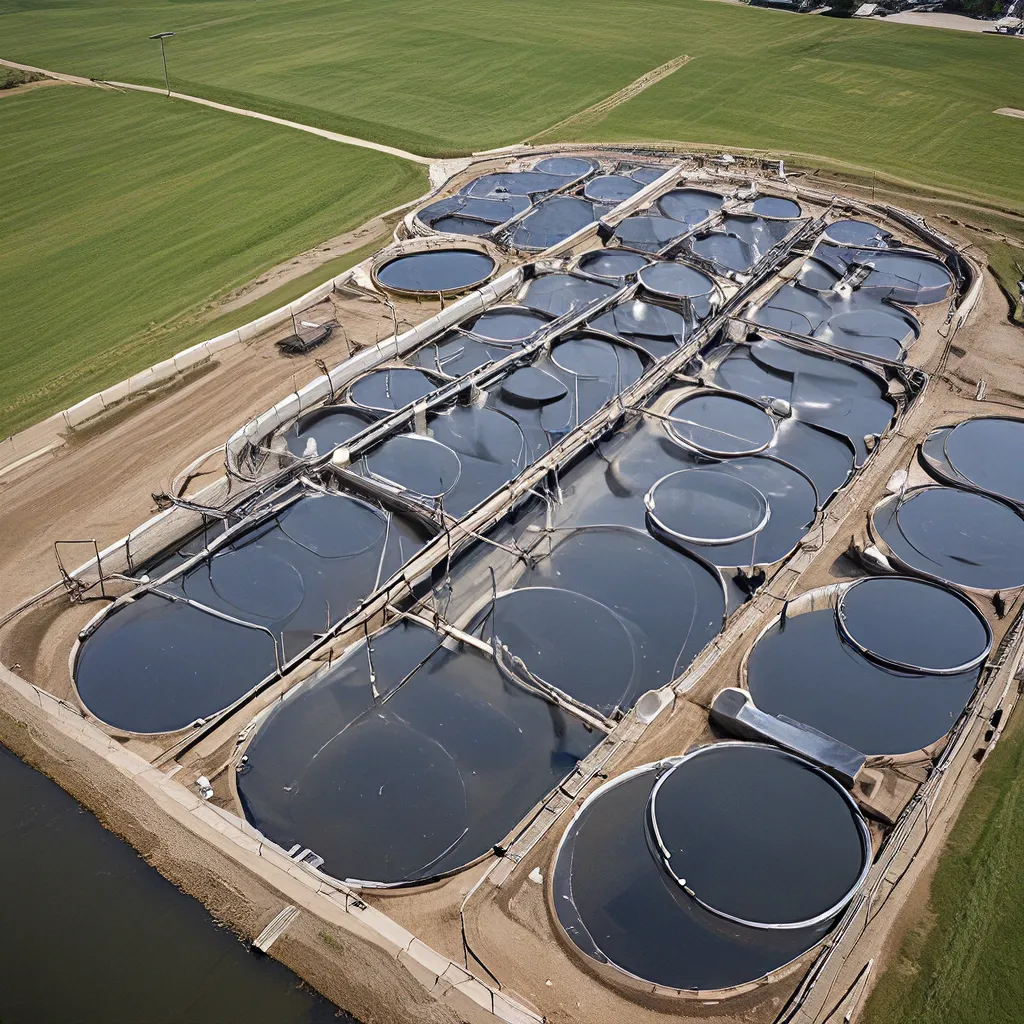
As someone who’s been in the wastewater treatment industry for a while, I’ve seen a lot of changes over the years. But one of the most exciting developments has been the increasing use of renewable energy in our facilities. It’s not just good for the environment – it can also save us a ton of money in the long run.
Now, I know what you might be thinking: “Renewable energy and wastewater treatment? How’s that even possible?” Well, my friends, let me tell you, it’s a match made in sustainability heaven. You see, wastewater treatment facilities are actually prime candidates for renewable energy integration, and the benefits are pretty darn impressive.
One of the key advantages is the reduced energy costs. Wastewater treatment is an energy-intensive process, and the use of renewable energy, like solar or wind power, can significantly lower those expenses. In fact, some facilities have reported savings of up to 50% on their energy bills by making the switch.
But the benefits don’t stop there. Renewable energy also helps reduce the carbon footprint of these facilities, which is a big deal in an industry that’s often seen as a bit of an environmental villain. By embracing clean energy sources, we’re doing our part to combat climate change and protect the planet.
And let’s not forget about the reliability factor. Traditional energy grids can be vulnerable to disruptions, but with on-site renewable energy generation, wastewater treatment plants can become more self-sufficient and resilient in the face of power outages or other grid-related issues.
Now, I know what you’re thinking – “That all sounds great, but how do you actually make it happen?” Well, my friends, there are a few different approaches that wastewater treatment facilities can take to integrate renewable energy into their operations.
One popular option is the installation of solar photovoltaic (PV) systems. These systems can be mounted on rooftops, carports, or even in open spaces on the facility’s property. The generated electricity can then be used to power the treatment processes, with any excess fed back into the grid.
Another option is wind power. Some wastewater treatment plants have even installed their own wind turbines on-site, taking advantage of the open spaces and windy conditions that often characterize these facilities.
But it’s not just about the big, flashy renewable energy projects. Biogas recovery is another way that wastewater treatment facilities can harness renewable energy. By capturing the methane produced during the anaerobic digestion of sludge, these facilities can use it to generate heat or electricity, further reducing their reliance on traditional energy sources.
And the best part? The renewable energy revolution in wastewater treatment is just getting started. Researchers and industry leaders are constantly exploring new and innovative ways to integrate clean energy into these facilities, from hydropower to geothermal systems and beyond.
So, if you’re a wastewater treatment professional, I encourage you to keep an eye on the latest developments in this space. Who knows, maybe your facility could be the next poster child for renewable energy integration. And if you’re just a curious citizen, I hope this article has given you a glimpse into the exciting world of sustainable wastewater treatment.
Now, I know what you might be thinking – “That’s all well and good, but what about the challenges of integrating renewable energy?” Well, my friends, I’m not going to sugarcoat it – there are certainly some hurdles to overcome.
One of the biggest obstacles is the upfront cost of installing renewable energy systems. While the long-term savings can be substantial, the initial investment can be a tough sell, especially for smaller, resource-constrained facilities. But innovative financing options and government incentives are helping to make these projects more accessible.
Another challenge is the intermittent nature of some renewable energy sources, like solar and wind. When the sun isn’t shining or the wind isn’t blowing, these systems may not be able to fully meet the energy demands of the treatment plant. But advances in energy storage technologies and microgrid systems are helping to address this issue.
And let’s not forget about the regulatory hurdles that can sometimes slow down the adoption of renewable energy in the wastewater industry. But as more and more facilities successfully navigate these waters, the path is getting smoother for those who want to follow in their footsteps.
Despite these challenges, I’m incredibly optimistic about the future of renewable energy integration in wastewater treatment. The environmental benefits, the cost savings, and the reliability it can provide are simply too compelling to ignore. And as the technology continues to evolve and the industry becomes more savvy, I believe we’ll see an explosion of innovative, sustainable solutions in the years to come.
So, whether you’re a wastewater treatment professional or just a concerned citizen, I encourage you to keep an eye on this space. Who knows, maybe your local treatment plant will be the next to harness the power of the sun, the wind, and the methane to become a true beacon of sustainability. And if you’re looking for a partner to help you on that journey, our team at https://www.alphawastewater.com/ would be more than happy to lend a hand.